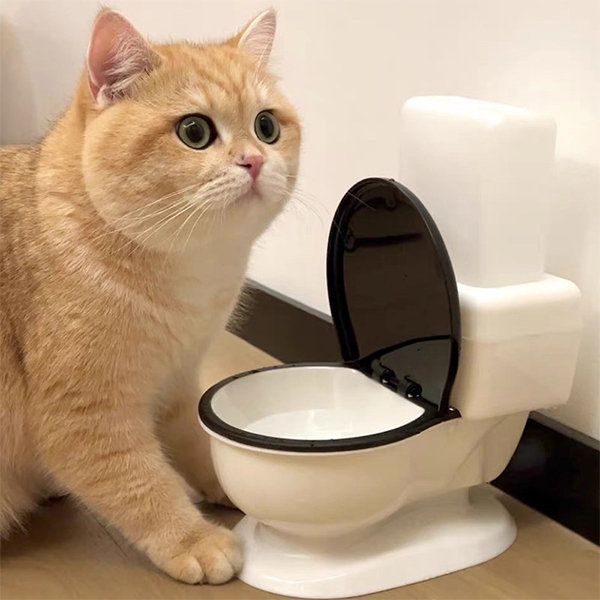We've come across this great article relating to Don’t flush cat feces down the toilet directly below on the net and figured it made good sense to write about it with you over here.

Introduction
As pet cat owners, it's essential to bear in mind how we throw away our feline buddies' waste. While it might seem practical to flush feline poop down the commode, this method can have detrimental effects for both the environment and human health and wellness.
Ecological Impact
Flushing feline poop introduces damaging virus and parasites right into the water, presenting a substantial threat to aquatic environments. These contaminants can negatively influence aquatic life and compromise water high quality.
Wellness Risks
Along with environmental worries, flushing cat waste can also position wellness threats to people. Cat feces might consist of Toxoplasma gondii, a parasite that can cause toxoplasmosis-- a potentially serious ailment, particularly for expectant women and individuals with weakened immune systems.
Alternatives to Flushing
The good news is, there are safer and more accountable ways to dispose of pet cat poop. Consider the following alternatives:
1. Scoop and Dispose in Trash
One of the most common approach of disposing of pet cat poop is to scoop it right into a biodegradable bag and toss it in the garbage. Be sure to utilize a devoted clutter inside story and dispose of the waste quickly.
2. Usage Biodegradable Litter
Opt for biodegradable cat trash made from products such as corn or wheat. These clutters are environmentally friendly and can be securely disposed of in the trash.
3. Bury in the Yard
If you have a yard, take into consideration burying cat waste in an assigned area away from vegetable gardens and water sources. Make certain to dig deep enough to avoid contamination of groundwater.
4. Set Up a Pet Waste Disposal System
Purchase an animal waste disposal system specifically designed for feline waste. These systems make use of enzymes to break down the waste, minimizing odor and ecological effect.
Conclusion
Liable pet possession extends past giving food and sanctuary-- it likewise involves appropriate waste administration. By refraining from flushing cat poop down the commode and opting for alternate disposal approaches, we can decrease our environmental impact and protect human health.
Why Can’t I Flush Cat Poop?
It Spreads a Parasite
Cats are frequently infected with a parasite called toxoplasma gondii. The parasite causes an infection called toxoplasmosis. It is usually harmless to cats. The parasite only uses cat poop as a host for its eggs. Otherwise, the cat’s immune system usually keeps the infection at low enough levels to maintain its own health. But it does not stop the develop of eggs. These eggs are tiny and surprisingly tough. They may survive for a year before they begin to grow. But that’s the problem.
Our wastewater system is not designed to deal with toxoplasmosis eggs. Instead, most eggs will flush from your toilet into sewers and wastewater management plants. After the sewage is treated for many other harmful things in it, it is typically released into local rivers, lakes, or oceans. Here, the toxoplasmosis eggs can find new hosts, including starfish, crabs, otters, and many other wildlife. For many, this is a significant risk to their health. Toxoplasmosis can also end up infecting water sources that are important for agriculture, which means our deer, pigs, and sheep can get infected too.
Is There Risk to Humans?
There can be a risk to human life from flushing cat poop down the toilet. If you do so, the parasites from your cat’s poop can end up in shellfish, game animals, or livestock. If this meat is then served raw or undercooked, the people who eat it can get sick.
In fact, according to the CDC, 40 million people in the United States are infected with toxoplasma gondii. They get it from exposure to infected seafood, or from some kind of cat poop contamination, like drinking from a stream that is contaminated or touching anything that has come into contact with cat poop. That includes just cleaning a cat litter box.
Most people who get infected with these parasites will not develop any symptoms. However, for pregnant women or for those with compromised immune systems, the parasite can cause severe health problems.
How to Handle Cat Poop
The best way to handle cat poop is actually to clean the box more often. The eggs that the parasite sheds will not become active until one to five days after the cat poops. That means that if you clean daily, you’re much less likely to come into direct contact with infectious eggs.
That said, always dispose of cat poop in the garbage and not down the toilet. Wash your hands before and after you clean the litter box, and bring the bag of poop right outside to your garbage bins.
https://trenchlesssolutionsusa.com/why-cant-i-flush-cat-poop/

Do you really like reading up on Can You Flush Cat Poo or Litter Down the Toilet?? Leave a short review down below. We'd be delighted to know your reactions about this write-up. We hope that you come back again later on. Do you know about somebody else who is truly interested in the subject? Feel free to share it. Thanks a bunch for your time. Kindly stop by our website back soon.
Schedule Services